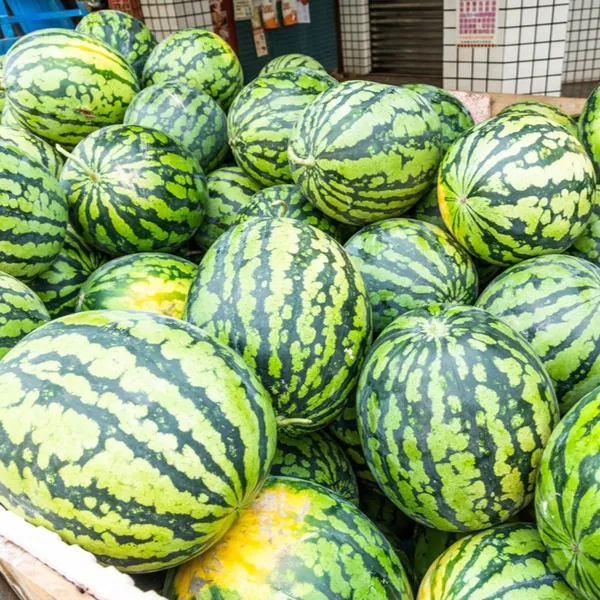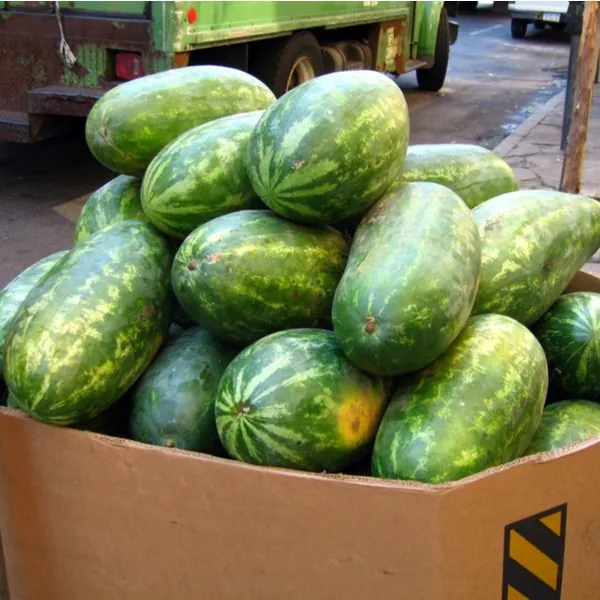
How to Ship Watermelons
Find answers to common freight questions
Often thought of as a summer treat, watermelons have seen increased popularity over the last two decades, ranking as the fifth most popular fruit in the United States in 2022. Due to this popularity, there is now much more demand for sweet, watery fruit year-round. For those who are frequently shipping produce, you most likely need to know how to ship watermelons safely. To ship watermelons by truckload carefully and efficiently, farmers, sellers, or shippers should consider hiring the best third-party logistics (3PL) company. FreightCenter specializes in freight shipping a wide variety of food items, and watermelons are no exception.
How to Ship Watermelons
Watermelons are delicate, watery fruits that require a variety of specific demands to ensure they arrive from the farm to purchase in the same shape as when they were picked. Two of the most important factors to consider when shipping watermelons are keeping a consistent temperature and humidity in the trailer transporting the fruit. Watermelon must be kept between 45-50 degrees Fahrenheit while maintaining a humidity point ranging from 85-95 percent. The Louisiana State University AgCenter’s guide to the Transportation of Fresh Produce recommends only using designated food transport vehicles to haul fresh produce from the field. These vehicles should be free of pesticides, soil, and other harmful chemicals and substances to ensure no cross-contamination occurs in transit.
Where Are Watermelons Coming From?
Watermelons have had a long run as the United State’s favorite melon. And while the summer months tend to be America’s favorite time to eat the sweet melon, recent popularity has created a new, higher demand in the other eight months of the year. Almost 80 percent of the United State’s total watermelon production takes place in four states: Texas, Florida, Georgia, and California. Florida is the top dog when it comes to watermelon production. In 2019, the Sunshine State accounted for 907 million pounds, or 25 percent, of the U.S. domestic supply. Increased popularity throughout the year has led to an increase in U.S. imports of watermelons. Imports reached 1.7 billion pounds in 2019, with Mexico leading the pack, providing 80 percent of the U.S.’s watermelon imports. In addition to Mexico’s watermelon production, the U.S. imports watery fruit from South American countries such as Costa Rica, Guatemala, Honduras, and Panama.
Picking Watermelons and Transporting them to the Loading Facility
In addition to keeping a clean, sanitized, and tidy space for freshly picked watermelons, workers should also ensure appropriate cleanliness and hygiene when working with watermelon harvesting. Those who harvest or transport watermelons should have a great understanding of the fruit and follow all food safety guidelines. Due to their fragility, watermelons should be transported from the field to the staging area with great care and caution.

Using an open-bed truck with proper crates and corrugated boxes will help ensure no watermelon rinds suffer cracking or splitting during transit. To harvest and deliver the juiciest and freshest watermelons, workers should avoid picking produce at high dew points. This will prevent the drying of the outer and inner parts of the fruit.
How to Ship Watermelons to a Supermarket, Co-op, or Fruit Stand
Once the watermelons are picked and transported to the staging area, it’s time to prep and package the produce for delivery. As stated above, for optimal freshness and quality, watermelons should be handled carefully during the sorting and grading process. Before packaging watermelons, be sure to carefully look over each fruit to ensure ripeness. In addition to ripeness, the fruit should be free of insects and bruises. Nobody wants to buy a damaged or spoiled watermelon, so it’s best to refrain from sending those to vendors.
Fragile fruits like watermelons should be packaged and transported using corrugated cardboard boxes that are attached to wooden pallets. This shipping process allows for the fruit to remain secure throughout their transit, preventing any damage from occurring between the farm and the store.
Once the fruit is packaged in a sturdy fiberboard box, it’s time to palletize and load the shipment. The most suitable trailer type for hauling produce is a refrigerated truck known as a reefer. Reefer trailers provide optimal temperature control for their cargo, ensuring produce such as watermelons arrive in tip-top shape. To regulate temperature control, be sure to allow for constant airflow throughout the packaged produce.
Choosing a 3PL to Ship Watermelons
Regardless of where a shipment of watermelons is headed, it is important to regulate and maintain temperature and humidity. Keeping within the 45-50 degree Fahrenheit temperature and 85-95 percent humidity point will ensure the freshest watermelons are delivered and sold to hopeful customers. When choosing a 3PL, consider these factors:
-What types of trucks and trailers are available for my haul?
-Do these trailers regularly transport produce?
-What are the cleaning or sanitizing guidelines for this company?
-Do they have experience hauling my produce?
-What are the transit times for my specific load?
-Do they offer shipment and temperature tracking?
These are all extremely important factors to keep in mind when choosing a freight shipping partner. At FreightCenter, we can help find the best carrier with the lowest rates for any watermelon shipments. By contacting one of our freight shipping experts, you’ll be able to list all the needs and requirements for your load before the shipping process. Hashing out the details and labeling your shipment‘s specific guidelines ahead of time will ensure a seamless shipping process for everyone involved. Give us a call at 800.716.7608, or run a free online freight quote today!

The cost to ship an engine can vary based on size, weight, distance traveled, and several other factors. In general, the cost to ship most engines runs from $120 – $380. Our free freight quote tool can give you a precise freight rate based on the engine you plan to ship.
Reed moreThe cost to ship an engine can vary based on size, weight, distance traveled, and several other factors. In general, the cost to ship most engines runs from $120 – $380. Our free freight quote tool can give you a precise freight rate based on the engine you plan to ship.
Reed moreWe provide competitive freight shipping prices and an all-inclusive, easy-to-use shipping experience for our customers. Exceeding our customers’ expectations results in thousands of satisfied customer reviews and repeat business. We believe in the power of our customer relationships. Check out FreightCenter reviews from real customers, and learn what they have to say about their freight shipping experience!




